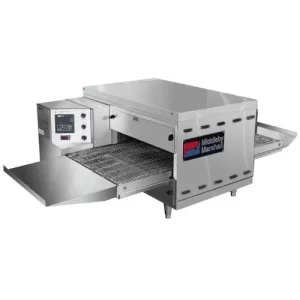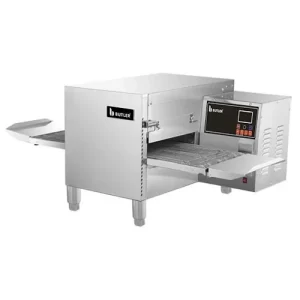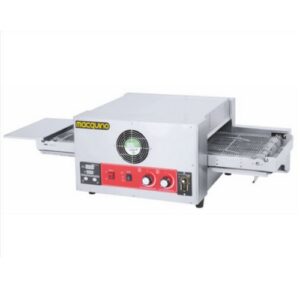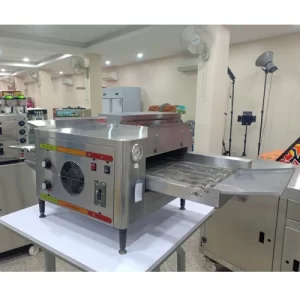Subtotal: ₹125,639.00
Bakery Equipment & Dairy Machinery
-
Gas Conveyor Pizza Oven
For Baking Pizza, Bread/Bun, Biscuit/CookiesOperation Type AutomaticPower Source Gas₹505,000.00Gas Conveyor Pizza Oven
₹505,000.00 -
Conveyor Pizza Oven
Air-Flow Direction Vertical Down AirflowMaximum Temperature 300 degreesDisplay DigitalColor SS₹78,000.00Conveyor Pizza Oven
₹78,000.00 -
Electric Conveyor Pizza Oven
Frequency 50-60HZModel Number MQECPO-12Power 6.7KW₹83,000.00Electric Conveyor Pizza Oven
₹83,000.00 -
Electric Large Conveyor Pizza Oven
For Baking PizzaOperation Type AutomaticPower Source ElectricSize Large₹81,600.00Electric Large Conveyor Pizza Oven
₹81,600.00
Bakery Equipment & Dairy Machinery: A Comprehensive Guide to Features, Benefits, and Selection Criteria
Introduction to Bakery Equipment & Dairy Machinery
The food processing industry heavily relies on specialized equipment to ensure efficiency, quality, and hygiene. Bakery equipment and dairy machinery play crucial roles in the production of baked goods and dairy products, from mixing and kneading to processing and packaging. These machines streamline operations, reduce manual labor, and enhance productivity in commercial bakeries, dairy farms, and large-scale food production units.
In this guide, we will explore different types of bakery equipment and dairy machinery, their benefits, key factors to consider when purchasing, and maintenance tips to ensure long-term performance and reliability.
Types of Bakery Equipment
1. Dough Preparation Equipment
Dough preparation machines help in mixing, kneading, and fermenting dough efficiently.
- Flour Kneading Machines: Automate the kneading process for consistent dough quality.
- Dough Mixers: Available in spiral, planetary, and horizontal models for different mixing needs.
- Dough Sheeters: Roll and flatten dough to a uniform thickness.
- Dough Dividers and Rounders: Ensure uniform portioning and shaping of dough balls.
2. Baking Equipment
Baking machines ensure proper cooking and texture of baked goods.
- Deck Ovens: Suitable for artisanal and commercial baking with even heat distribution.
- Rotary Rack Ovens: Ideal for high-volume production of bread and pastries.
- Convection Ovens: Use hot air circulation for faster and uniform baking.
- Tunnel Ovens: Used in large-scale production for continuous baking.
3. Post-Baking and Cooling Equipment
These machines assist in cooling, slicing, and packaging baked goods.
- Cooling Racks and Conveyors: Speed up the cooling process before packaging.
- Bread Slicers: Ensure uniform slicing of loaves for commercial packaging.
- Cake Decorating Machines: Automate the icing and decoration process for consistent results.
- Packaging Machines: Seal and wrap baked goods for extended shelf life.
Types of Dairy Machinery
1. Milk Processing Equipment
These machines help in handling and processing raw milk.
- Milk Pasteurizers: Remove harmful bacteria and extend shelf life.
- Homogenizers: Ensure uniform fat distribution in milk.
- Cream Separators: Separate cream from milk for butter and other dairy products.
- Milk Cooling Tanks: Maintain optimal temperature to prevent spoilage.
2. Cheese Processing Equipment
Machines designed for efficient cheese production.
- Cheese Vats: Used for curd formation and fermentation.
- Cheese Presses: Apply controlled pressure to form cheese blocks.
- Cheese Aging Chambers: Maintain proper humidity and temperature for aging.
- Cutting and Packaging Machines: Ensure precise cutting and efficient packing.
3. Butter and Yogurt Processing Machines
Equipment used for making butter and yogurt efficiently.
- Butter Churns: Convert cream into butter through controlled churning.
- Yogurt Fermentation Tanks: Facilitate the fermentation process for yogurt production.
- Filling and Sealing Machines: Automate the packaging of butter and yogurt products.
Benefits of Bakery Equipment & Dairy Machinery
1. Increased Efficiency and Productivity
Automated equipment accelerates production and ensures consistency in output.
2. Consistent Product Quality
Machines provide uniform mixing, baking, and processing, improving overall quality.
3. Hygiene and Safety Compliance
Modern machinery adheres to food safety standards, reducing contamination risks.
4. Labor Cost Reduction
Automation minimizes the need for manual labor, cutting down operational costs.
5. Energy Efficiency
Advanced models consume less power while maintaining high performance.
6. Scalability for Growth
Machinery allows businesses to scale production based on demand.
Factors to Consider When Buying Bakery Equipment & Dairy Machinery
1. Capacity and Output Requirements
Select machines based on the scale of production and future expansion plans.
2. Material and Build Quality
Opt for stainless steel construction for durability and hygiene.
3. Automation and Smart Features
Look for programmable settings and digital controls for efficiency.
4. Energy Consumption
Choose energy-efficient models to lower operational costs.
5. Ease of Maintenance
Ensure easy cleaning, servicing, and availability of spare parts.
6. Budget and ROI Considerations
Compare prices and long-term benefits before investing.
Maintenance Tips for Bakery Equipment & Dairy Machinery
1. Regular Cleaning and Sanitization
Keep machines free from residue and bacteria by following proper cleaning protocols.
2. Routine Inspection and Servicing
Check for wear and tear in belts, motors, and electrical components.
3. Lubrication of Moving Parts
Ensure smooth operation by lubricating essential components.
4. Adhering to Manufacturer’s Guidelines
Follow recommended maintenance schedules for longevity.
5. Proper Storage and Handling
Prevent damage by storing machinery in appropriate environments.
Conclusion
Bakery equipment and dairy machinery are indispensable in modern food production, enhancing efficiency, quality, and profitability. By investing in the right equipment and maintaining it properly, businesses can optimize operations, meet growing demands, and ensure long-term success in the food industry.







